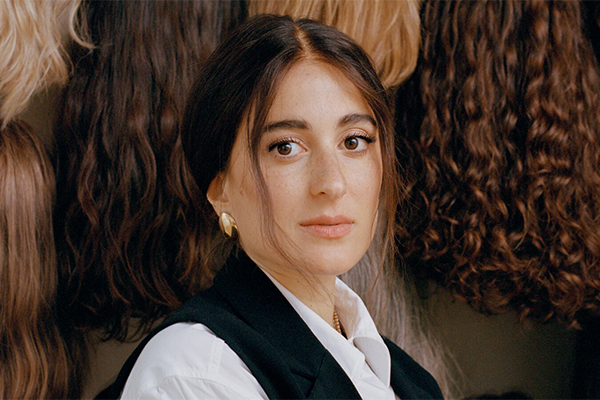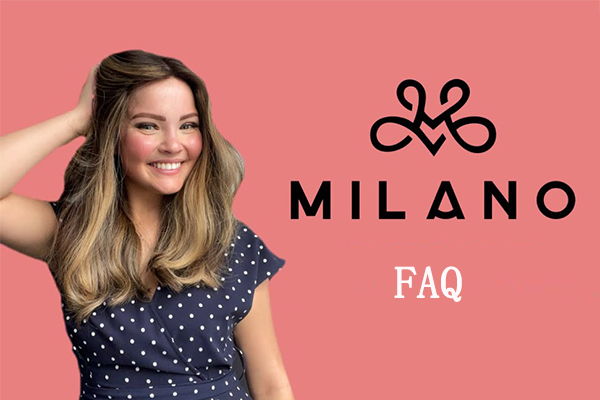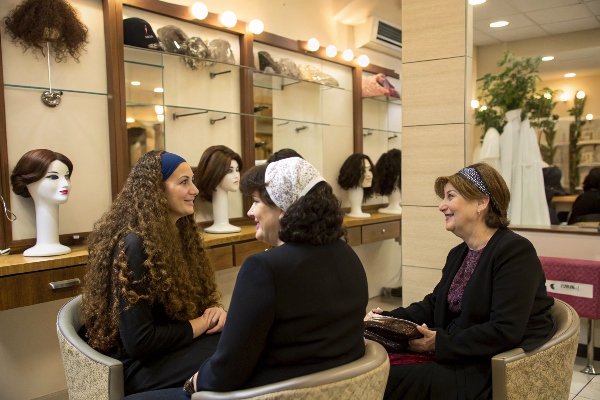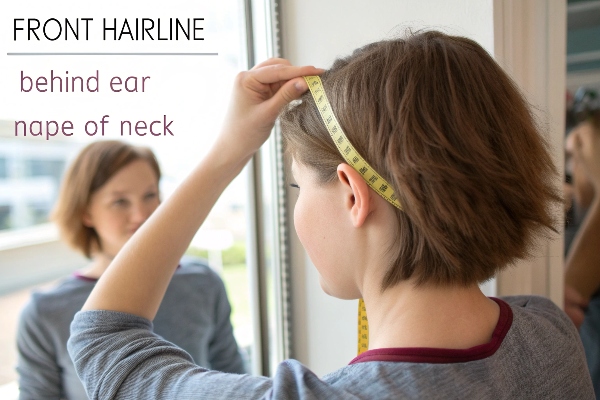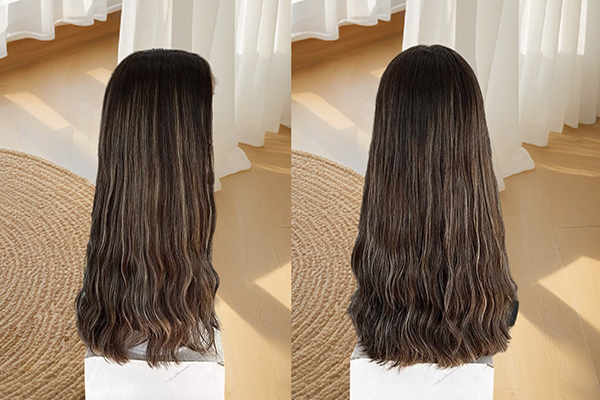Choosing the wrong wig density can leave you with a look that’s either too thin or unnaturally bulky. I learned this the hard way when my first wig purchase was a complete disaster for my everyday style.
Wig density refers to how thick or thin the hair fibers are on the wig cap, measured as a percentage of a natural human scalp’s hair coverage. The best density is not one-size-fits-all; it depends on your desired look, head size, and lifestyle, with 150% being the most popular for a natural, everyday appearance.
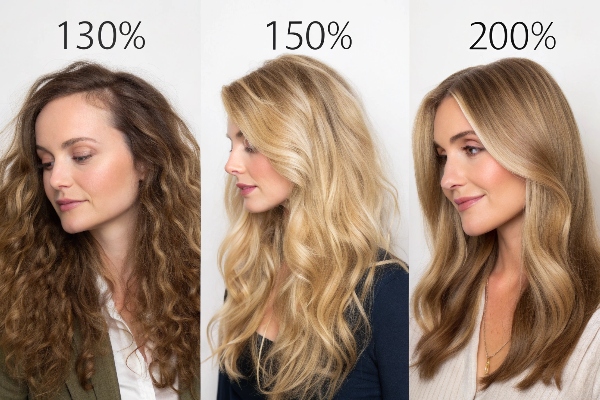
Understanding wig density1 is crucial for achieving your desired style, as it significantly impacts how natural your wig looks. For instance, a density of 130% may offer a more subtle appearance, suited for a casual, everyday look, while 200% density creates a fuller, more dramatic effect ideal for special occasions.
Additionally, factors such as the shape of your face and personal preference play vital roles in determining the best density for you. It’s important to experiment with different densities to find the balance that complements your features and suits your lifestyle. Remember, the right density enhances your overall appearance, giving you confidence and a polished look.
Is 180 or 150 density better?
You’re torn between two popular choices, wondering which one will give you that perfect, believable volume without looking like a helmet. I remember staring at product pages for hours, unsure of the real-world difference.
For a natural and versatile look that mimics healthy, real hair, 150% density is generally better. It provides ample fullness for most styles without appearing overly thick. The 180% density offers more volume and drama, which is great for specific styles but can look less natural for daily wear.
To truly understand which one is better for you, we need to look at the specifics of each. The choice often comes down to your personal definition of "fullness."
Breaking Down 150% vs. 180% Density
The 150% density wig2 is considered the industry standard for a natural look. It closely resembles the amount of hair on a healthy, average scalp. When you wear a 150 density wig, you get good coverage and body. It’s easy to style and doesn’t feel heavy on your head. This density works wonderfully for straight, wavy, and most curly styles. It’s my go-to recommendation for anyone wanting a wig for work or everyday activities because it blends seamlessly.
On the other hand, 180% density3 is a step up. It delivers significantly more hair, resulting in a fuller, more voluminous silhouette. This is ideal if you love big curls, want to create intricate braided styles, or simply desire a more glamorous look. However, this extra hair comes with considerations. The cap can feel heavier and warmer. On a smaller head, it might appear overwhelming or obviously "wig-like" because the density is beyond what is typical for natural hair.
Here is a simple comparison:
| Feature | 150% Density | 180% Density |
|---|---|---|
| Appearance | Natural, everyday fullness | Voluminous, glamorous |
| Best For | Daily wear, professional settings | Special occasions, bold styles |
| Weight & Comfort | Lighter, more breathable | Heavier, can be warmer |
| Styling Versatility | Good for most styles | Excellent for thick braids and big curls |
| Realism | High, mimics natural hair | Can look less natural if not styled carefully |
Ultimately, "better" is subjective. If your priority is a discreet, comfortable, and natural-looking wig, 150% is the safer and often better choice. If your goal is maximum volume and dramatic impact, then 180% is the way to go.
What does 200% density wig mean?
Seeing "200% density" might make you think of an impossibly thick head of hair. It sounds extreme, and it can be, but it serves a very specific purpose for those who want a show-stopping look.
A 200% density wig means the wig has twice the amount of hair found on a typical 100% density wig, which represents an average human scalp. This results in an extremely full, thick, and voluminous appearance, often used for theatrical looks, drag, or specific high-fashion styles.
The Reality of 200% Density Wigs
A 200% density wig4 is a statement piece. The "200%" is not just a marketing term; it quantitatively means there is double the hair wefted or injected into the cap compared to the baseline. This creates an intense density5 that is rarely seen in nature. The cap is densely packed, which gives the hair immense body from the roots. Styling a 200 density wig allows for incredible creativity—you can achieve massive afros, elaborate braided crowns, or cascading curls with tremendous volume that smaller densities can’t support.
However, this comes with significant trade-offs. The weight of the wig is substantially more, which can cause discomfort or even strain on your neck during extended wear. It also tends to be much hotter, as the thick hair traps air and heat against your scalp. For everyday realism, a 200% density wig often fails because it looks too perfect and too thick to be believable. It’s a specialized tool for creating a specific, bold aesthetic rather than a practical choice for daily life. I reserve my 200% density unit for photoshoots or events where I want all eyes on my hair.
Is higher density hair better?
It’s easy to assume that more hair automatically equals a better, more luxurious wig. I used to think that way, until I experienced the discomfort of a too-dense wig on a hot summer day.
No, higher density hair is not inherently better. While it offers more volume, it also increases weight, reduces breathability, and can look less natural. The ideal density is a balance between desired fullness, comfort, and realism, not simply the highest number available.
The pursuit of "higher is better" is a common trap. Let’s dissect the pros and cons to find the right balance for you.
The Truth About High-Density Wigs
The belief that higher density is superior is a misconception. Density is a feature, not a grade of quality. Think of it like choosing a mattress: a firmer mattress isn’t objectively better than a softer one; it’s about what suits your body’s needs. Similarly, wig density is about what suits your style and comfort needs.
Higher density wigs (180% and above) excel in providing volume and durability. They are fantastic for hairstyles that require a lot of body, like large curls or thick braids. The extra hair can also make the wig last longer because any shedding is less noticeable. However, the drawbacks are real. They are heavier, which can lead to headaches or cap slippage. They are less breathable, making your scalp sweatier. Most importantly, an excessively high density can break the illusion of natural hair, as very few people have that level of thickness naturally from root to tip.
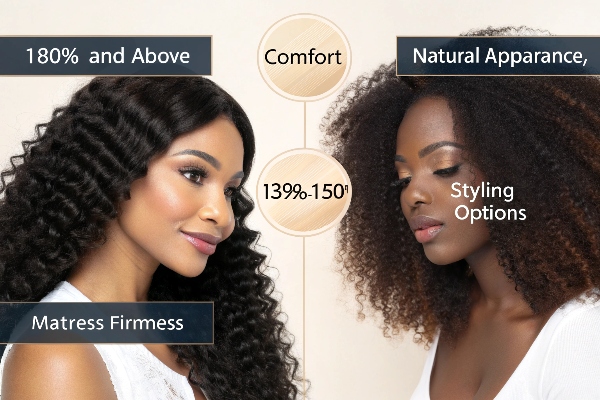
A lower density wig (130%-150%), in contrast, offers superior comfort, a more natural hairline, and easier styling. It mimics the way hair naturally grows from the scalp, with a slight see-through effect at the part that is crucial for realism. For most people seeking a wig for everyday wear, a medium density provides the best combination of beauty, comfort, and believability. Therefore, "better" is defined by your specific context, not by a number on a scale.
How to tell the quality of a wig?
You’ve found a wig with the perfect density, but how can you be sure it’s a good-quality piece that will last? A high density on a poorly made wig is a waste of money.
To assess wig quality, examine the hair fiber type (human hair vs. synthetic), the construction of the cap (lace front, monofilament), and the craftsmanship of the knots and wefts. A high-quality wig will have a realistic hairline, soft fibers, and secure, neat construction throughout.
When evaluating wig quality6, also consider the texture and shine of the fibers, as well as the overall weight and balance of the piece. A well-crafted wig should feel comfortable and secure on your head, with no pulling or discomfort. Look for adjustable straps and breathable materials that provide a snug fit without irritation. Additionally, check for versatility in styling; quality wigs can often withstand heat and may be styled just like natural hair. Investing time to assess these details will ensure you choose a wig that not only looks fabulous but also lasts.
A Detailed Guide to Evaluating Wig Quality
Judging a wig’s quality involves looking beyond the marketing descriptions. First, determine the hair type. Human hair wigs are the highest quality, offering the most natural look, feel, and styling versatility (you can use heat tools and dye them). Synthetic wigs are more affordable but have limitations with heat and can develop a shine over time that looks unnatural.
Next, inspect the cap. A lace front wig7 is a sign of better quality because it creates an undetectable hairline. Look for fine, transparent lace that blends with your skin. A monofilament top is another premium feature where each hair is hand-tied to the cap, allowing for multidirectional parting and a scalp-like appearance. Run your fingers along the part; if you can see the cap clearly and it looks like plastic, the quality is lower. If it looks like a natural scalp, the quality is higher.
Finally, check the craftsmanship. Turn the wig inside out. The wefts (rows of hair) should be evenly spaced and securely sewn. There should be no loose threads or gaps. For lace front wigs, examine the knots at the hairline. They should be small, neat, and if possible, bleached to blend with your skin tone. I always do a gentle tug test on a few hairs to see if they are securely anchored. A quality wig feels solid and well-made, not flimsy.
Is a 150 density wig full?
You’re worried that opting for a 150 density will leave you with a skimpy, see-through look. I had the same fear, imagining my scalp showing through uncomfortably.
Yes, a 150 density wig is considered full. It provides substantial body and coverage that closely mirrors the fullness of a head of healthy, natural hair. It is the most commonly chosen density for its ideal balance of volume and a natural, believable appearance.
"Full" is a relative term. Let’s define what "full" means in the context of a 150 density wig to put your mind at ease.
Understanding the Fullness of 150% Density
When we say a 150 density wig is "full," we mean it has enough hair to look thick, healthy, and styled without any sparse areas. It is not, however, the ultra-dense, "hairmercial" level of fullness that you see in 200% or 250% wigs. That level is "very full" or "extra full."
The 150% measurement hits a sweet spot. It gives you enough hair to create beautiful waves, hold a curl, and have movement. When you look at the part on a 150 density wig, you will see a slight and natural-looking scalp exposure, which is exactly what happens with biological hair. This is a key marker of realism. A wig that is too dense will have no scalp visibility at the part, which can look artificial.
For the vast majority of people, a 150 density wig provides all the fullness they could want for a daily hairstyle. It looks lush and voluminous without being overwhelming. It’s the density you choose when you want people to compliment your hair, not question if it’s a wig. It’s full, but naturally so.
Conclusion
The best wig density is a personal choice that balances desired volume with comfort and realism. While higher densities offer more drama, 150% remains the gold standard for a natural, versatile, and wearable look every day.
Understanding wig density is essential for achieving a natural look and enhancing your overall style. ↩
Explore this link to understand why a 150% density wig is ideal for a natural look and everyday wear. ↩
Discover the benefits of a 180% density wig for achieving a fuller, glamorous hairstyle. ↩
Explore the benefits of a 200% density wig to understand its unique styling potential and how it can elevate your look for special occasions. ↩
Learn how intense density impacts wig styling options, allowing for creative hairstyles that stand out and make a statement. ↩
Understanding wig quality is essential for making an informed purchase, ensuring comfort and longevity. ↩
Learn about lace front wigs and how they provide an undetectable hairline for a more natural appearance. ↩

